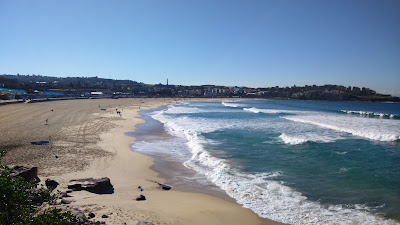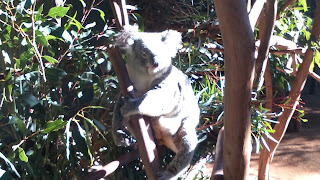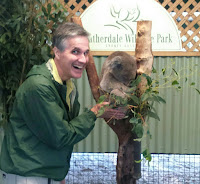 |
| Kathmandu, Nepal - April 11, 2015 |
For two weeks, it was all mountains, but I must admit I also enjoy the chaos that is Kathmandu.
My journey is now almost complete. Here are some final numbers. In all, I hiked approximately 102 miles (165 kilometers) round trip, including my acclimation hikes. It took me about 58 hours.
This
video might help you visualize the trek and what I went through.
I never doubted I possessed the will to make it to base camp, but I feared, on more than one occasion, that my ankle wouldn't hold up. Ibuprofen got me through. I'm sure an orthopedist would have discouraged my trek, but as my loved ones often remind me, I can be quite stubborn.
The other unknown for all high-elevation hikers is altitude sickness. Fortunately, I just had a brief brush with that problem.
Would I trek to Everest again?
No.
The trek was one of the most incredible travel experiences of my life, a series of fond memories I'll always cherish; however, it was also the hardest physical and mental challenge I've ever faced.
The hiking alone – ascending 1,000 to 2,000 feet a day in altitudes above 10,000 feet – presented enough difficulty, not to mention the frigid temperatures, lack of hygiene, and basic – some might say primitive – living conditions.
Heat just doesn't exist in the Himalayas. The thought of getting up in the middle of the night, braving the arctic-like chill to urinate in a hole in the ground could be overwhelming. Many of my fellow trekkers said they preferred to hold things in until morning, when the same frigid air awaited.
Life became simple – hiking, eating, sleeping, and trying to stay warm around the cast iron stove in the dining room of each tea house.
Most of all, a repeat trek couldn't top the original. With the exception of
The Godfather Part II, I'm not a fan of sequels. I prefer to stick with my initial feelings gazing up at the snow-capped Himalayas for the first time.
Would I recommend the Everest Base Camp trek?
Absolutely.
The scenery is unparalleled and the thrill of pushing through the daily adversity rewarding beyond words. This is coming from someone who's given up on his fair share of pursuits in his life. With the trek, the only option was to keep moving forward or turn back, admitting defeat. Short of injury, I wasn't allowing that to happen.
If you go, I recommend that you buy the best boots you can afford, as well as trekking poles. The poles prevented me from falling down steep slopes on numerous occasions, as well as helping me get up some rough inclines.
Finally, prepare yourself physically and mentally for the hike. The best thing I did beforehand was climbing up 30 floors of stairs each morning. Stairs are your friend. You'll be grateful for any past encounters with stairs when you're struggling to reach the top of mountain passes.
Even though I'm not back yet in Singapore, friends are already asking me what insights I gained from the trip.
First and foremost, I learned that anything is possible, at whatever age. I thought most of the hikers would be in their 20s, but I met trekkers spanning all generations. Personally, I'll turn 50 in two months and felt I kept up fairly well with the youngsters.
Second, I discovered the old adage "slow and steady wins the race" is actually true.
I'll bet I was one of the slowest trekkers in Nepal. My strategy, especially during difficult climbs, was plant hiking pole 1, plant pole 2, step, step. At times, I felt I was moving in slow motion. I called myself the robot hiker. I wanted to keep moving forward at a steady place and never lose my breath, stopping every hour or two to rest for a few minutes.
Often, younger hikers raced by me. My guide called them the "marathon trekkers." Interestingly enough, I consistently caught up and passed them because they repeatedly stopped, gasping for air.
My guide Pasang kept telling me to go slowly and focus on conserving my energy for the latter stages of the trek. He was correct because while many of the marathon trekkers ran out of steam and sounded like they were suffering from asthma above 10,000 feet the robot kept charging along ... plant pole 1, plant pole 2, step, step.
I'm trying to apply the concept of slow and steady to my personal life. I'm constantly in a hurry to get somewhere or to achieve something; however, it doesn't always seem like I'm covering much ground. Maybe, I'll get much farther ahead by taking my foot off the accelerator. It worked in the Himalayas.
Finally, with all my daily distractions removed, I was reminded of what's really important – family, friends, and one's health. I'll bet I didn't think about work or possessions or money or deadlines or ... once.
Before I wrap up my latest journey, I want to thank several people.
I can't say enough about
Mountain Monarch Adventures. With little flexibility in my schedule, the owner, Pradip Kumar Limbu, allowed me to fly to Lukla a day early in case of weather problems. Sure enough, rain and thick clouds cancelled flights for two days, but Pradip stuck to his word to allow me to begin my trek anyway without the rest of my group.
I know it must have been a scheduling nightmare, but Pradip never said a word, and he never said anything about my having a single room in the tea houses, although I paid for double occupancy. No extra charge for the single room.
On the last day when clouds rolled in threatening to cancel my return flight from Lukla to Kathmandu, I began to worry I might have to pay for a helicopter ride, costing upwards of $1,000. Helicopters can normally fly in more adverse conditions.
Fortunately, the clouds lifted. When I shared my fears with Pradip back in Kathmandu, he smiled and said he had a Plan B.
I had to ask.
Pradip revealed that he had already made tentative arrangements to fly me back via helicopter, at no extra charge, knowing my international flight left the next day. That's unheard of. It says a lot about the company's integrity and about Pradip himself.
At the same time, I want to thank my family and friends for their well wishes and support. Even though I wasn't talking to you in the Himalayas, I could feel your presence throughout.
I especially want to say how much I appreciate my parents and their overabundance of patience. When I told my mom I was headed to Everest, she responded with nothing but enthusiasm and encouragement. It's not easy having a son who's always wandering around the globe.
Last, but not least, I want to acknowledge my lovely girlfriend Alexandra who sent me the most uplifting email of all during my journey. Just before I left Kathmandu, she wrote that each morning while exercising she'd raise the incline on her treadmill as a gesture of solidarity. I cried when I read it and used those words as motivation on some of my most difficult climbs.
I've gone on long enough. I hope you enjoyed my Nepal blog, and I hope you find your own adventure soon, whatever that might be, but don't wait too long. The two major earthquakes are yet more reminders that life is so fragile and so short.
NOTE: These are the exact, unedited journal entries I wrote during my trip. Because of limited internet access in the Himalayas, I am posting them now, rather than during my actual journey, which I finished two weeks before the first earthquake. I hope it's not perceived that I'm disrespecting the dead or those suffering. On the contrary, I'm hoping to provide some insight into why so many people, considering the risks, continue to be drawn to the Himalayas year after year.
Tourism will likely be what fuels Nepal's recovery. Until that happens, Nepal continues to need our immediate help, which is why I'll continue providing a list of relief agencies for anyone wishing to donate.



































